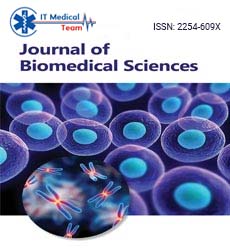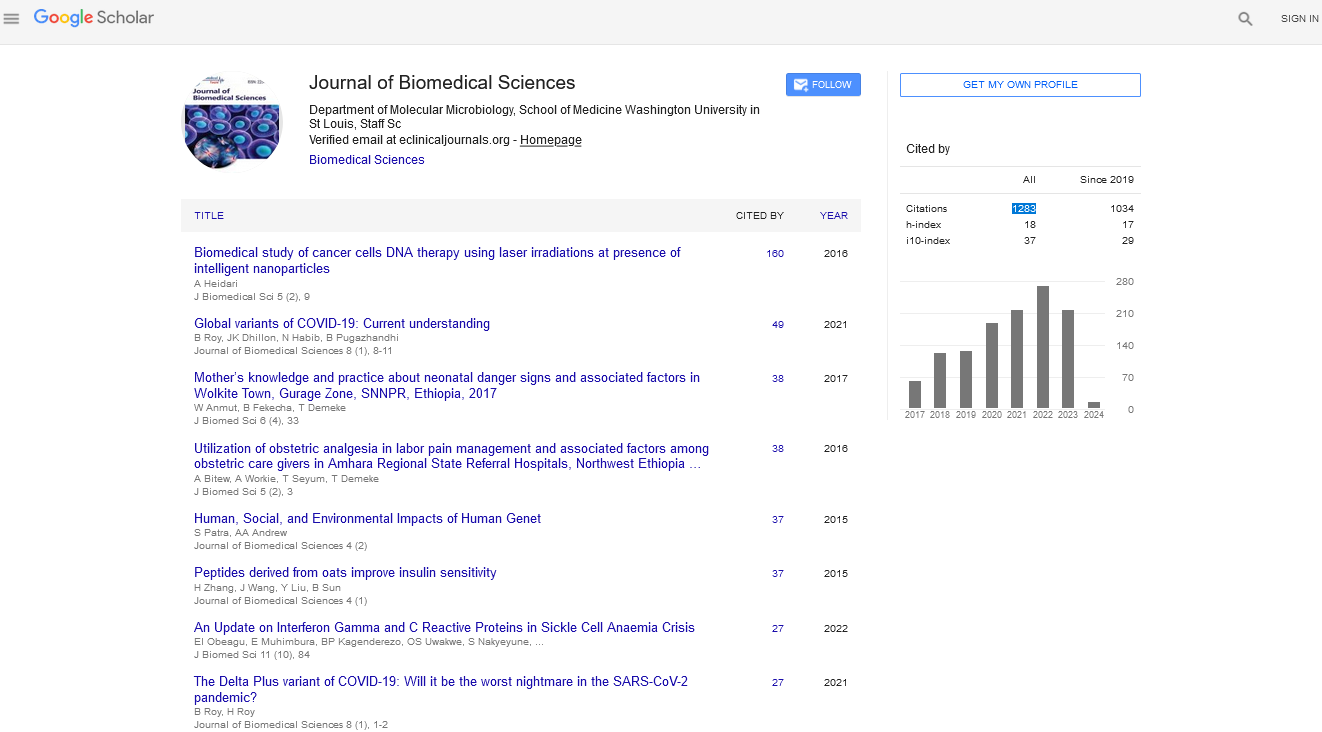Anticoli S*, Pezzella FR, Scifoni G, Ferrari C and Pozzessere C
Stroke Unit, Emergency Department, San Camillo Hospital, Rome, Italy
- *Corresponding Author:
- Anticoli S, MD
Stroke Unit, Emergency Department, San Camillo Hospital, Rome, Italy
E-mail: s.anticoli@scamilloforlanini.rm.it
Received date: Mar 07, 2016; Accepted date: Apr 27, 2016; Published date: May 05, 2016
Citation: Anticoli S, Pezzella FR, Scifoni G, et al. Treatment of Cerebral Venous Thrombosis with Rivaroxaban. J Biomedical Sci. 2016, 5:3. doi:10.4172/2254-609X.100031
Copyright: © 2016 Anticoli S. This is an open-access article distributed under the terms of the Creative Commons Attribution License, which permits unrestricted use, distribution, and reproduction in any medium, provided the original author and source are credited.
Introduction
Cerebral vein thrombosis (CVT) is a relatively uncommon type of stroke accounting for about 0.5% to 1% of all strokes [1,2]. The clinical presentation of CVT is highly variable and ranges from mild or non-specific symptoms of raised intracranial pressure such as headache or visual complains, to focal neurologic signs, generalized seizures or coma. Information about the natural history and prognosis of CVT is scarce and mostly based on studies of modest size [3].
The Rocket [1] trial documented that rivaroxabam, a novel oral anticoagulant, has a lower rate of most concerning bleeds: fatal bleeding and intra cranial haematoma compared to warfarin, which makes it particularly attractive for the treatment of CVT. Other authors [4,5] have published encouraging data on the use of rivaroxaban in CVT.
Methods
We performed a systematic search in 6 patients consecutively admitted for CVT in the Stroke Unit of a tertiary center in Rome, Italy between January 2010 and July 2014. All relevant clinical data were retrospectively extracted from the clinical files using a standardized form. The diagnosis of CVT was ascertained by magnetic resonance venography in all cases. Follow-up visits were scheduled at 3 months and 12 months and the occurrence of thrombotic events or bleeding complications was recorded. Follow-up imaging with magnetic resonance was performed at 3 and 12 months to assess vessel recanalization. Excellent outcome was defined as a modified Rankin Scale (mRS) of 0 or 1. Informed consent was obtained from all patients. Four patients (67%) were initially anticoagulated with LMWH at therapeutic or intermediate dosages for four to seven days. Rivaroxaban (20 mg once daily) was started after a median of seven days of heparin in two patients while the other two were first transitioned to acenocoumarol for 15 days and three months, respectively, and then to rivaroxaban 20 mg once daily. Two patients received rivaroxaban from start at dosages of 15 mg twice daily for 21 days followed by rivaroxaban 20 mg once daily. Median duration of treatment with rivaroxaban was 48 weeks (32 to 52 weeks). No patient received concomitant antiplatelet drugs.
Results
At three months, an excellent outcome (mRS of 0 to 1) was observed in 100% of patients and complete or partial recanalization in 83% (Table 1). At 12 months, an excellent outcome was observed in 100% of patients and complete (33%) or partial recanalization (67%) in all cases. There were no bleeding complications (major, clinically relevant nonmajor, or minor) or recurrent thrombotic events during followup and all patients were alive at last study visit.
| Variable |
Patients |
| N = 6 |
| Age, years |
36.5 (16 - 46) |
| Sex, females |
6 |
| Duration of hospital stay, days (median, min–max)* |
15.5 (5 - 22) |
| Risk factors for vein thrombosis |
|
| Oral contraception |
3 |
| Pregnancy/puerperium |
1 |
| Hereditary thrombophilia |
2 |
| Previous VTE |
0 |
| Clinical presentation |
|
| Headache |
5 |
| Vomiting |
2 |
| Seizures |
2 |
| Paresis or motor dysfunction |
3 |
| Aphasia |
2 |
| Visual symptoms |
3 |
| Parestesias |
1 |
| Affected vessel |
|
| Transverse sinus |
5 |
| Superior sagittal sinus |
2 |
| Sigmoid sinus |
4 |
| Cortical veins |
0 |
| Jugular vein |
0 |
| Brain lesion |
|
| Edema |
3 |
| Hemorrhage |
4 |
| Venous infarction |
2 |
| Signs of intracranial hypertension |
5 |
| Clinical and neuroimaging outcomes |
|
| Excellent (mRS 0–1) |
6 (100%) |
| Partial or complete recanalization |
|
| 3- 6 months |
83% |
| 12 months |
100% |
| Recurrent CVT |
0 |
| Any VTE during study |
0 |
| Bleeding (major or minor) |
0 |
Table 1: Demographic, clinical, and imaging features of the study cohort
None of our patients presented with this high-risk profile, thus our series may represent a group with a relatively good prognosis which may limit the generalizability of these findings.
Conclusion
Recanalization rates and clinical outcome of our small sample of patients treated with rivaroxabam confirm previous observations [4,5], eventough these studies have retrospective, uncontrolled design and a small sample size, they all showed a similar clinical benefit in addition to NOAC better safety profile.
In conclusion, these data suggest a potential role of rivaroxaban in the treatment of CVT. Large, multicenter prospective cohort studies are eagerly awaited to evaluate the appropriateness and safety of novel oral anticoagulants for CVT in the near future [6].
9195
References
- Patel MR, Mahaffey KW, Garg J, The ROCKET AF Steering Committee, et al. (2011) for the ROCKET AF Investigators. Rivaroxaban versus warfarin in nonvalvular atrial fibrillation. N Engl J Med 365:883-891
- Stam J(2005) Thrombosis of the cerebral veins and sinuses. N Engl J Med352:1791-1798.
- Bousser MG, Ferro JM(2007) Cerebral venous thrombosis: An update. Lancet Neurol 6:162-170.
- Geisbüsch C, Richter D, Herweh C, Ringleb PA, Nagel S(2014)Novel factor xa inhibitor for the treatment of cerebral venous and sinus thrombosis: first experience in 7 patients. Stroke 45:2469-2471.
- Mutgi SA, Grose NA, Behrouz R (2015)Rivaroxaban for the treatment of cerebral venous thrombosis.Int J Stroke 100: 167-168.
- Dentali F, Gianni M, Crowther MA, Ageno W (2006) Natural history of cerebral vein thrombosis: a systematic review Blood 108:1129-1134.





